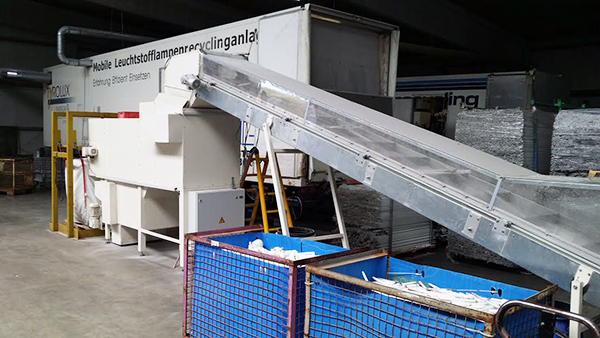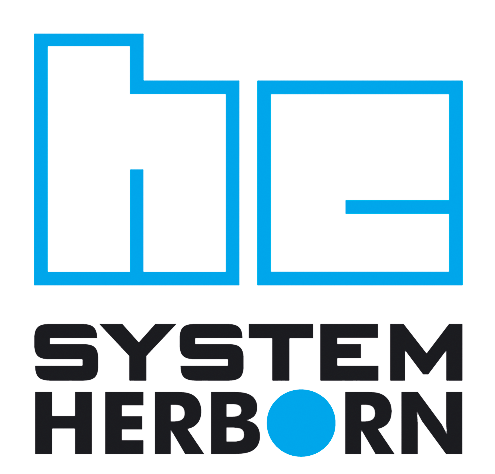Recyclingtechnology „system herborn“ for CFL, HID, LED-lamps
 For the processing (recycling) of discharge lamps from lamp programs of the respective manufacturers, which can be used in most different operating areas and are just as different concerning the form, the technology “system herborn” was expanded through special admission systems which make possible mechanical decomposition, substance separation and final treatment of the non-straight lamps (Ring-Form, U-Form, CFL, LED, …).
For the processing (recycling) of discharge lamps from lamp programs of the respective manufacturers, which can be used in most different operating areas and are just as different concerning the form, the technology “system herborn” was expanded through special admission systems which make possible mechanical decomposition, substance separation and final treatment of the non-straight lamps (Ring-Form, U-Form, CFL, LED, …).
The processing systems of the plant technology guarantee a separation of the lamps construction parts through substance criteria so that a further utilization of the secondary substances is possible.
The technical conception of the special form recycling plant “system herborn” guarantees also that there cannot be released any pollutants to the environment during the processing. The whole area of the plant, in which pollutants can be released, is subject to under inflation during the processing. Therefore the polluted exhausted air from all areas of the plant is sucked off and inevitably led through an activated carbon filter. A microprocessor controlled control and monitoring system guarantees the precise functioning according to the given physical and mechanical-technical data. When deviating from the given desired values the entire plant stops automatically. The fault point is shown on the display so that the occurred fault points can be easily located and cleared.
The CFL lamps are emptied onto the feeding band of the recycling system. The enclosed sucking system makes sure that all emissions are sucked into the recycling unit. The lamps are feed by the conveyor belt into the centrifuge-sieve crusher for CFL lamps. The complete feeding system is housed; no pollutants can reach during the process into the environment out of the processing unit for CFL lamps.
The compact fluorescent lamps and the odd-shaped lamps are fed onto a band conveying system and from there into an inlet port of a speed-controlled centrifuge and sieve separation drum. On the basis of the exactly fixed speed, the glass bulbs are separated from the base parts with the inbuilt electronic without most of the bases and electronics parts being destroyed.
The broken bulb glass is transported by a sucking hose into the basic stationary fluorescent lamp recycling unit “system herborn” for tube lamps. There the glass will undergo the complete cleaning and processing procedure (thermal (if ordered), magnetic, etc.) of the glass from the tube lamps. The lamp bases remaining in the centrifuge (plastic and electronics-parts) can be transferred directly into a container where they undergo a thermal treatment by an electrical heating device. After this thermal treatment the plastic and metal parts can be channeled out. Like the basic unit the installation stands under constantly under-pressure. Consequently no pollutants can reach during the process into the environment out of the processing unit for CFL lamps.





